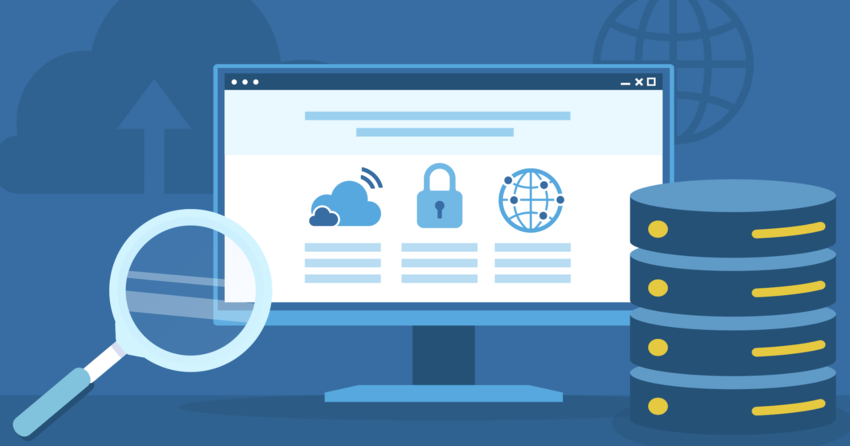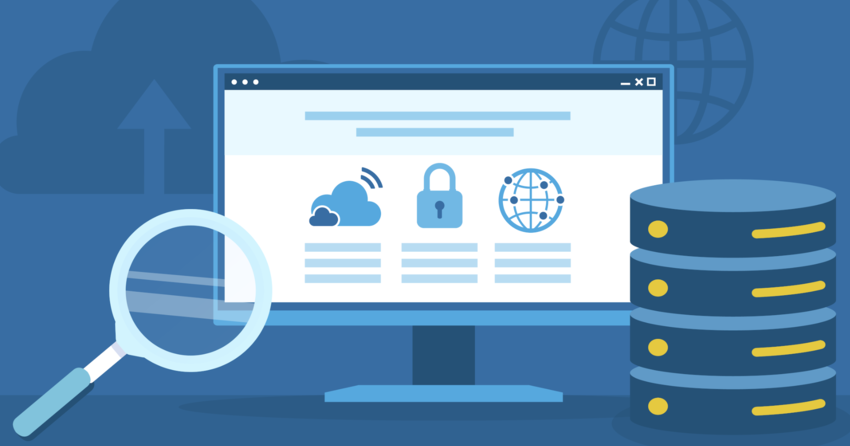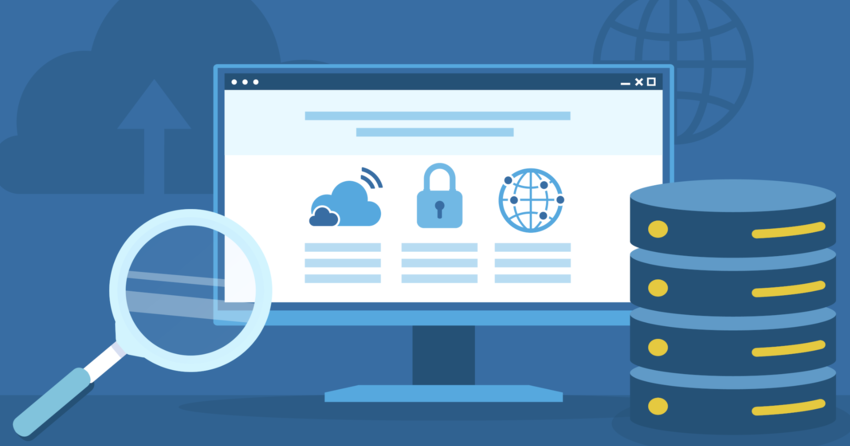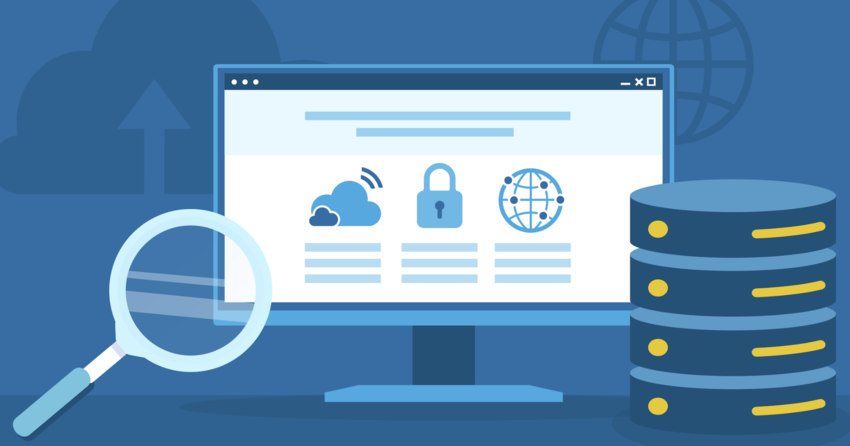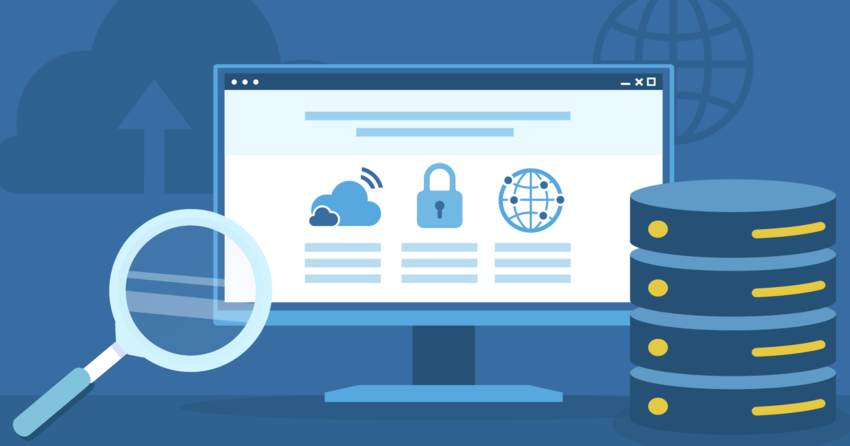Inside this Article
Definition of Uptime
Uptime refers to the duration a system, server, network, or application remains operational and available for use. Commonly measured as a percentage, you will find that uptime indicates the reliability and stability of a technological resource. You can think of it as the opposite of downtime, which signifies the period a system is non-functional or inaccessible. You see, high uptime is a key performance indicator (KPI) for IT infrastructure, reflecting its ability to consistently deliver services without interruptions.How Does Uptime Work
Uptime is a measure that involves continuous monitoring and reporting to ensure systems are consistently available. Think about how it starts with implementing monitoring tools that track the operational status of servers, networks, and applications. These tools continuously check whether these resources are responsive and functioning correctly. Essentially, when a system is running without any failures or interruptions, it’s considered to be in an “up” state. The cumulative time spent in this state is then calculated over a specific period, such as a day, week, month, or year. It can be represented as a percentage, using a formula that divides the total uptime by the total monitored time, which provides a clear indication of reliability. If you are trying to maintain a high level of uptime, most IT teams also set up alerts to notify them immediately of any downtime events. These alerts enable a swift response to minimize the impact on services and users. Understanding the intricacies of how uptime is achieved and measured can significantly improve the reliability of your digital operations. Let me show you how you can calculate the uptime. Here’s the formula: Uptime % = (Total Uptime / Total Time) * 100 For example, consider a server that operates for 720 hours in a month (30 days). If the server experiences 30 minutes of downtime, the uptime percentage is calculated as follows: Total Time = 720 hours Downtime = 30 minutes = 0.5 hoursTotal Uptime = 720 – 0.5 = 719.5 hours Uptime % = (719.5 / 720) * 100 ≈ 99.93% To better illustrate different levels of uptime, here are a few common benchmarks: 99% Uptime (“Two Nines”):
- Downtime per year: 3.65 days
- Downtime per month: 7.3 hours
- Downtime per year: 8.76 hours
- Downtime per month: 43.8 minutes
- Downtime per year: 52.56 minutes
- Downtime per month: 4.38 minutes
- Downtime per year: 5.26 minutes
- Downtime per month: 26.3 seconds
- Downtime per year: 31.5 seconds
- Downtime per month: 2.63 seconds
Why Uptime Monitoring is Important
Website uptime monitoring is a crucial aspect of maintaining a strong online presence and ensuring business continuity. A couple of reasons include its assistance in proactively detecting and resolving issues that could lead to downtime. Another key point is that it has a critical impact on user experience, revenue, and reputation. Let’s explore the key reasons why uptime monitoring is so important:Ensuring Consistent User Experience
Consistent user experience helps in retaining customer trust and encouraging repeat visits. For example, if you visit an e-commerce site and consistently find it available and responsive, you’re more likely to return for future purchases. Knowing that customers are more likely to abandon websites that are frequently unavailable, uptime monitoring ensures that your site remains accessible, providing a seamless and positive experience for all visitors. This, subsequently, reduces bounce rates, increases page views, and improves overall user satisfaction.Minimizing Revenue Loss
Revenue loss is directly linked to downtime, especially for businesses that rely heavily on online sales. Every minute your website is down, you’re potentially losing sales, advertising revenue, and other income streams. With uptime monitoring, you can promptly identify and address issues before they escalate into prolonged outages, thus safeguarding your revenue. Similarly, consider a subscription-based service; downtime can lead to customer dissatisfaction and cancellations, further impacting your financial health.Protecting Brand Reputation
Protecting brand reputation relies on the perception of your reliability and trustworthiness. Considering that frequent downtime can damage your brand’s image, causing customers to lose confidence in your services. Continuous uptime monitoring helps you maintain a reliable online presence, reinforcing trust in your brand. Specifically, this is particularly important for businesses providing critical services, such as financial institutions or healthcare providers, where reliability is paramount.Maintaining Search Engine Rankings
Maintaining search engine rankings has an indirect, yet vital impact on your visibility and traffic. Knowing that search engines like Google consider website availability as a ranking factor, frequent downtime can negatively affect your search engine optimization (SEO) efforts, leading to lower visibility in search results. Moreover, monitoring your uptime helps you ensure that your website remains accessible to search engine crawlers, which helps preserve your rankings. Improving your SEO means attracting more organic traffic and enhancing your online authority.Meeting Service Level Agreements (SLAs)
Meeting SLAs is a critical aspect of contractual obligations between service providers and their clients. Many businesses operate under service level agreements (SLAs) that guarantee a certain level of uptime. For example, failure to meet these agreements can result in penalties or loss of business. Uptime monitoring helps you ensure that you’re meeting your SLA commitments, avoiding potential legal and financial repercussions. Similarly, this is especially relevant for cloud service providers, hosting companies, and other IT service providers.Proactive Problem Resolution
Proactive problem resolution enables you to identify and fix issues before they cause significant disruptions. By continuously monitoring uptime, you can detect performance bottlenecks, software bugs, or infrastructure problems early on. Getting to the root of the problem helps prevent minor issues from escalating into major outages. Moreover, this proactive approach reduces the frequency and duration of downtime incidents, leading to more stable and reliable systems.Optimizing Resource Allocation
Resource allocation optimization results from the data collected through uptime monitoring, that helps you make informed decisions about your IT infrastructure. For example, identifying patterns of downtime can highlight areas where additional resources or upgrades are needed. Moreover, this might involve upgrading server hardware, improving network capacity, or optimizing software configurations. Efficient resource allocation improves performance and reduces the likelihood of future downtime.Ensuring Business Continuity
Ensuring business continuity is essential for maintaining operational stability and resilience. With uptime monitoring, you can support business continuity by minimizing disruptions to critical systems and services. Moreover, real-time alerts and historical data provide valuable insights for disaster recovery planning and incident response. Improving your business continuity helps maintain productivity, even in the face of unexpected events.Verifying Third-Party Reliability
Verifying third-party reliability is increasingly important as businesses rely on numerous external services and APIs. Specifically, monitoring uptime ensures that these third-party services are meeting their promised levels of availability. For example, if a critical API used by your application experiences frequent downtime, you can take steps to find alternative solutions or negotiate better service terms. Improving your third-party service reliability will avoid disruptions to your own services.Demonstrating Reliability to Stakeholders
Demonstrating reliability to stakeholders builds trust and confidence in your operations. Consistently high uptime showcases your commitment to providing dependable services. Stakeholders, including customers, investors, and partners, often view uptime as a key indicator of your company’s competence and stability. Making a public display of your uptime metrics will improve stakeholder relationships and attract new opportunities.Facilitating Data-Driven Decisions
Data-driven decisions are made possible through uptime monitoring, providing a wealth of data that can inform strategic and operational choices. For example, historical uptime data can be used to identify trends, predict potential issues, and evaluate the effectiveness of IT investments. Additionally, this data-driven approach helps you continuously improve your infrastructure and processes, leading to greater overall efficiency.Strategies to Increase Uptime
Improving uptime is a critical goal for any organization that relies on technology to deliver services, conduct business, or engage with its audience. I think it’s important to proactively manage your systems to ensure the highest possible availability, which can significantly enhance user satisfaction, protect revenue streams, and maintain a positive brand reputation. You should consider the following strategies that can help increase uptime:Implement Redundancy
Implementing redundancy involves duplicating critical system components to provide a backup in case of failure. Consider the following:- Hardware Redundancy: You should duplicate servers, network devices, and storage systems to ensure that if one component fails, another can immediately take over.
- Software Redundancy: Employ redundant software configurations, such as load balancing across multiple application instances, to distribute traffic and prevent overloads.
- Geographic Redundancy: Distribute your infrastructure across multiple geographic locations to protect against regional outages, such as natural disasters or localized power failures.
Utilize Load Balancing
Load balancing distributes network traffic across multiple servers to prevent any single server from becoming overloaded. Several benefits come with this:- Traffic Distribution: Load balancers intelligently route traffic to available servers based on factors like server health and capacity.
- High Availability: If a server fails, the load balancer automatically redirects traffic to the remaining healthy servers, ensuring continuous service availability.
- Improved Performance: Distributing the load improves response times and overall system performance, preventing bottlenecks.
Employ Failover Systems
Employing failover systems ensures that backup systems automatically take over when primary systems fail. These systems reduce downtime and minimize disruption.- Automatic Failover: Set up automatic failover mechanisms that detect failures and initiate a switch to backup systems without manual intervention.
- Regular Testing: Conduct regular failover tests to ensure that backup systems are functioning correctly and can handle the load.
- Failback Procedures: Establish clear procedures for switching back to the primary systems once they are restored.
Conduct Regular Maintenance
Regular maintenance helps prevent issues before they cause downtime, including keeping your hardware and software in optimal condition.- Scheduled Downtime: Plan maintenance activities during off-peak hours to minimize the impact on users.
- Software Updates: Keep all software, including operating systems, applications, and security tools, up to date with the latest patches and updates.
- Hardware Checks: Regularly inspect and maintain hardware components, such as servers, storage devices, and network equipment, to identify and address potential issues.
Employ Proactive Monitoring
Proactive monitoring enables you to detect and address potential problems before they result in downtime, often before they impact users.- Real-Time Monitoring: Utilize real-time monitoring tools to continuously track the health and performance of your systems.
- Threshold Alerts: Set up alerts that trigger when key metrics, such as CPU usage, memory utilization, or network latency, exceed predefined thresholds.
- Performance Analysis: Regularly analyze performance data to identify trends and patterns that may indicate potential issues.
Optimize Database Performance
Database optimization ensures that your databases are running efficiently, as slow or unresponsive databases can lead to application downtime.- Indexing: Properly index database tables to speed up query performance.
- Query Optimization: Regularly review and optimize database queries to reduce execution time and resource usage.
- Database Maintenance: Perform routine database maintenance tasks, such as backups, defragmentation, and integrity checks.
Secure Your Systems
Securing your systems from cyber threats is an essential aspect of maintaining uptime, as security breaches can lead to significant downtime and data loss.- Firewalls and Intrusion Detection: Implement firewalls and intrusion detection systems to protect against unauthorized access and malicious attacks.
- Regular Security Audits: Conduct regular security audits to identify vulnerabilities and ensure that security measures are up to date.
- Incident Response Plan: Develop and test an incident response plan to effectively handle security incidents and minimize their impact on system availability.
Content Delivery Networks (CDNs)
CDNs store cached versions of your website content on multiple servers around the world, which helps in improving load times and uptime.- Geographic Distribution: CDNs distribute content across geographically diverse servers, reducing latency for users around the world.
- Traffic Handling: CDNs can handle large volumes of traffic, preventing overloads and ensuring that your website remains available during peak times.
- DDoS Protection: Many CDNs offer DDoS protection services to mitigate the impact of distributed denial-of-service attacks.
Solid Disaster Recovery Plan
A disaster recovery plan will allow you to quickly restore operations in the event of a major outage, such as a natural disaster or a large-scale system failure.- Backup and Replication: Regularly back up your data and replicate it to offsite locations.
- Recovery Procedures: Document detailed recovery procedures that outline the steps to restore systems and data.
- Regular Testing: Conduct regular disaster recovery drills to ensure that your plan is effective and that your team is prepared to execute it.
Use Cloud Services
Utilizing cloud services can provide inherent redundancy and scalability, as cloud providers offer robust infrastructure and services designed for high availability.- Scalability: Cloud platforms enable you to quickly scale resources up or down based on demand, ensuring that your systems can handle traffic spikes.
- Redundancy: Cloud providers offer built-in redundancy features, such as automatic backups and failover systems, to protect against data loss and downtime.
- Managed Services: Cloud providers offer a range of managed services, such as database administration and security monitoring, which can reduce your operational burden and improve uptime.
Train Your Staff
A trained and knowledgeable team is better equipped to prevent and resolve issues that could lead to downtime.- Continuous Training: Provide ongoing training to your IT staff on the latest technologies, security practices, and troubleshooting techniques.
- Cross-Training: Ensure that multiple team members are familiar with critical systems and procedures to avoid single points of knowledge.
- Knowledge Base: Develop a comprehensive knowledge base that documents common issues, troubleshooting steps, and best practices.
Establish a Change Management Process
A well-defined change management process helps prevent issues caused by poorly planned or executed changes to your systems.- Change Requests: Implement a formal change request process that requires changes to be documented, reviewed, and approved before implementation.
- Testing and Staging: Thoroughly test changes in a staging environment before deploying them to production.
- Rollback Plans: Develop rollback plans to quickly revert changes if they cause unexpected issues.
Audit Your Systems
Regularly auditing your systems can help identify vulnerabilities and areas for improvement, enabling you to proactively address potential problems.- Performance Audits: Conduct regular performance audits to identify bottlenecks and optimize system performance.
- Security Audits: Perform security audits to identify vulnerabilities and ensure that security measures are effective.
- Compliance Audits: Conduct compliance audits to ensure that your systems meet regulatory requirements and industry standards.
Monitoring Tools and Techniques
Uptime monitoring tools and techniques are essential for ensuring the continuous availability and reliability of systems, applications, and websites. Here are different tools and methods:Website Monitoring Tools
Website monitoring tools are designed to continuously check the availability and performance of websites. Here are some examples:- UptimeRobot: Offers free and paid plans for monitoring websites, with features like multiple location checks and detailed reports.
- Pingdom: Provides advanced website monitoring, including page speed analysis, transaction monitoring, and real user monitoring (RUM).
- Site24x7: Offers comprehensive monitoring solutions for websites, servers, networks, and applications, with real-time alerts and performance metrics.
- New Relic: A popular tool for application performance monitoring (APM), including uptime and response time tracking, error analysis, and performance optimization.
- Datadog: Provides extensive monitoring capabilities for infrastructure, applications, logs, and security, with customizable dashboards and alerts.
Server Monitoring Tools
Server monitoring tools track the health and performance of servers, ensuring they remain operational. A few examples include:- Nagios: A widely used open-source monitoring system that tracks server uptime, resource utilization, and application health, with customizable alerts and reporting.
- Zabbix: Another open-source monitoring solution that provides comprehensive monitoring of servers, virtual machines, applications, and network devices.
- PRTG Network Monitor: An all-in-one monitoring solution that tracks uptime, bandwidth usage, and system performance, with a user-friendly interface and flexible licensing options.
- SolarWinds Server & Application Monitor: Offers in-depth monitoring of server hardware, software, and applications, with automated discovery, capacity planning, and performance analysis.
Network Monitoring Tools
Network monitoring tools track the health and performance of network devices and connections. For example, you could use these:- Cisco DNA Center: Provides centralized management and monitoring of Cisco network devices, with real-time visibility, automation, and analytics.
- Paessler PRTG Network Monitor: A versatile tool that monitors network devices, traffic, and applications, with customizable dashboards and alerts.
- WhatsUp Gold: Offers comprehensive network monitoring, with automated discovery, mapping, and alerting, as well as performance and traffic analysis.
- ManageEngine OpManager: Provides integrated network and server monitoring, with customizable dashboards, real-time alerts, and automated troubleshooting.
Techniques
Uptime monitoring can be achieved through various techniques, depending on your specific needs and resources. Here are several commonly used methods:- Ping Monitoring: Sends ICMP (Internet Control Message Protocol) echo requests to a server or device to check its reachability. If the device responds, it’s considered up; if not, it’s considered down.
- HTTP/HTTPS Monitoring: Sends HTTP/HTTPS requests to a website or application to check its availability and response time. It’s often used to monitor web servers and APIs.
- TCP Port Monitoring: Checks whether specific TCP ports are open and listening on a server. It is beneficial for monitoring services like databases, email servers, and custom applications.
- DNS Monitoring: Checks the resolution and availability of DNS servers. It ensures that domain names are correctly resolving to IP addresses.
SSL Certificate Monitoring: Monitors the validity and expiration of SSL certificates. It is critical for ensuring secure communication over HTTPS. - Real User Monitoring (RUM): Collects data from real users’ interactions with a website or application. RUM provides insights into actual user experience, including page load times, error rates, and geographical performance.
- Synthetic Monitoring: Uses automated scripts to simulate user interactions with a website or application. Synthetic monitoring can proactively identify issues before they affect real users.
- Log Monitoring: Analyzes system logs for errors, warnings, and other events that may indicate potential issues. Log monitoring can help identify the root causes of downtime and performance problems.





